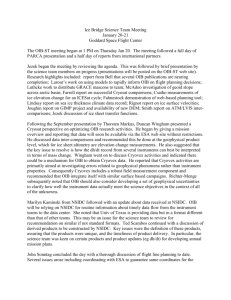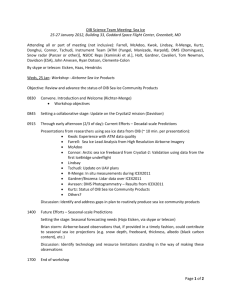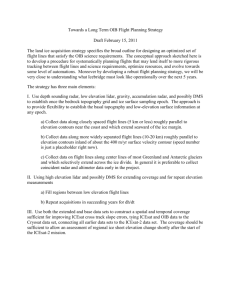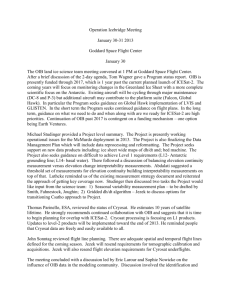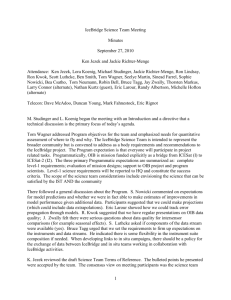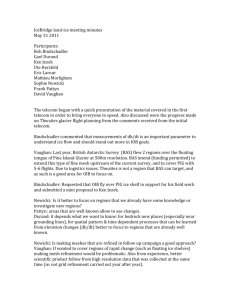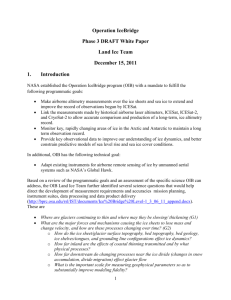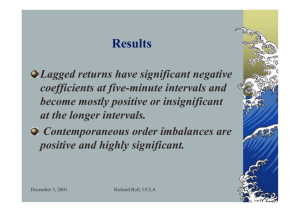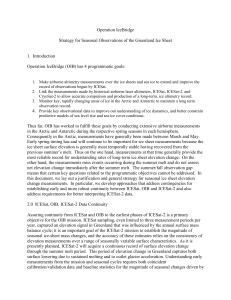Land Ice Wednesday
advertisement
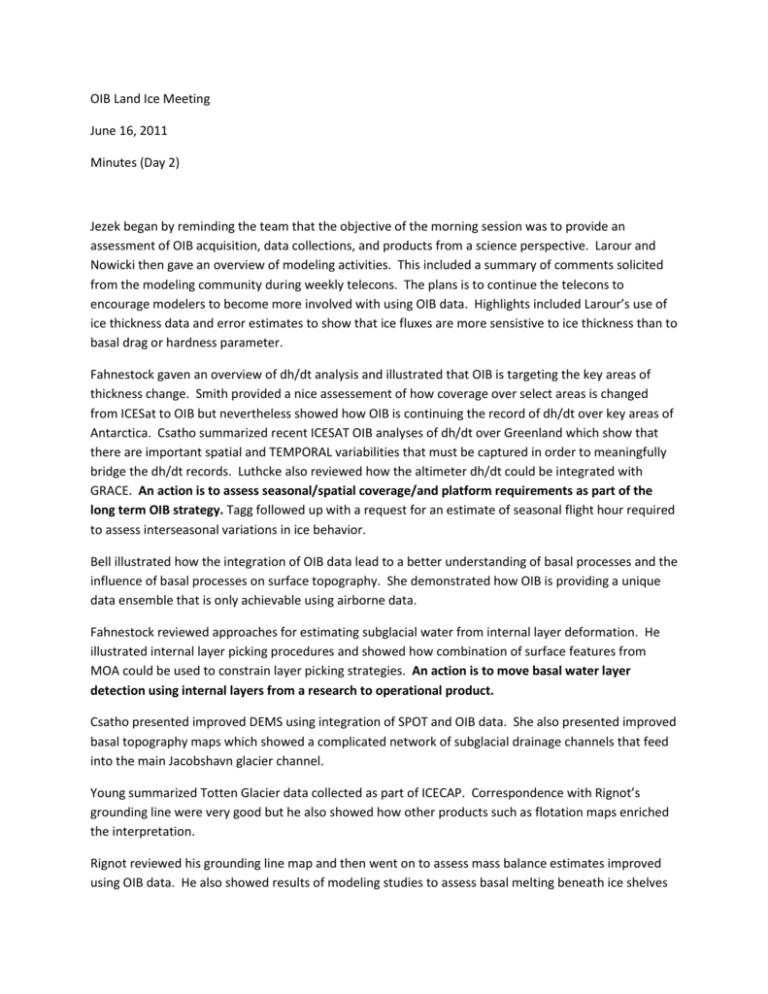
OIB Land Ice Meeting June 16, 2011 Minutes (Day 2) Jezek began by reminding the team that the objective of the morning session was to provide an assessment of OIB acquisition, data collections, and products from a science perspective. Larour and Nowicki then gave an overview of modeling activities. This included a summary of comments solicited from the modeling community during weekly telecons. The plans is to continue the telecons to encourage modelers to become more involved with using OIB data. Highlights included Larour’s use of ice thickness data and error estimates to show that ice fluxes are more sensistive to ice thickness than to basal drag or hardness parameter. Fahnestock gaven an overview of dh/dt analysis and illustrated that OIB is targeting the key areas of thickness change. Smith provided a nice assessement of how coverage over select areas is changed from ICESat to OIB but nevertheless showed how OIB is continuing the record of dh/dt over key areas of Antarctica. Csatho summarized recent ICESAT OIB analyses of dh/dt over Greenland which show that there are important spatial and TEMPORAL variabilities that must be captured in order to meaningfully bridge the dh/dt records. Luthcke also reviewed how the altimeter dh/dt could be integrated with GRACE. An action is to assess seasonal/spatial coverage/and platform requirements as part of the long term OIB strategy. Tagg followed up with a request for an estimate of seasonal flight hour required to assess interseasonal variations in ice behavior. Bell illustrated how the integration of OIB data lead to a better understanding of basal processes and the influence of basal processes on surface topography. She demonstrated how OIB is providing a unique data ensemble that is only achievable using airborne data. Fahnestock reviewed approaches for estimating subglacial water from internal layer deformation. He illustrated internal layer picking procedures and showed how combination of surface features from MOA could be used to constrain layer picking strategies. An action is to move basal water layer detection using internal layers from a research to operational product. Csatho presented improved DEMS using integration of SPOT and OIB data. She also presented improved basal topography maps which showed a complicated network of subglacial drainage channels that feed into the main Jacobshavn glacier channel. Young summarized Totten Glacier data collected as part of ICECAP. Correspondence with Rignot’s grounding line were very good but he also showed how other products such as flotation maps enriched the interpretation. Rignot reviewed his grounding line map and then went on to assess mass balance estimates improved using OIB data. He also showed results of modeling studies to assess basal melting beneath ice shelves as well as how improved bathymetry changed interpretation of oceanic transport beneath ice shelves. A discussion followed of how mass balance could be successfully used to improve ice thickness DEMS in a fashion better than simple kriging. Paden gave a brief review of picking approaches for MCORDS data. Larour noted that a detailed description of MCORDS error statistics are crucial for modeling and an action Is to provide same. Paden noted that earlier KU thickness data sets do not necessarily have a consistent wave speed or firn correction model and that metadata to document same are probably no longer available. The approach is to reprocess the data to a common standard. Paden requested feedback from the science team on data formats. Sonntag began the discussion of flight planning and provided a draft of potential flight lines for the coming season. Tagg recommended that flight lines be planned for the maximum flight duration. Tagg also inquired whether mission duration could be extended past end of November but Jezek circulated information showing that surface melt at low elevations could complicate dh/dt after late November. Hofton then summarized the strategy for G-5 LVIS acquisitions. Tagg asked whether it was more desirable to fly the G-5 in 2011 or use the money to speed delivery of a Global Hawk system. Smith noted that by waiting we approach the launch of ICESAT-2 and lesson the value of a later data set. The Bindschadler data request was discussed and a recommendation to fly a portion of the area was past on to Sonntag for further discussion with Bindschadler. Other flight line options were then discussed and Jezek concluded with a summary of level 1 requirements vs the current flight line portfolio. Activities for Thursday include a summary of planned ICECAP activities, long range OIB strategy and additional flight requests from modelers.
